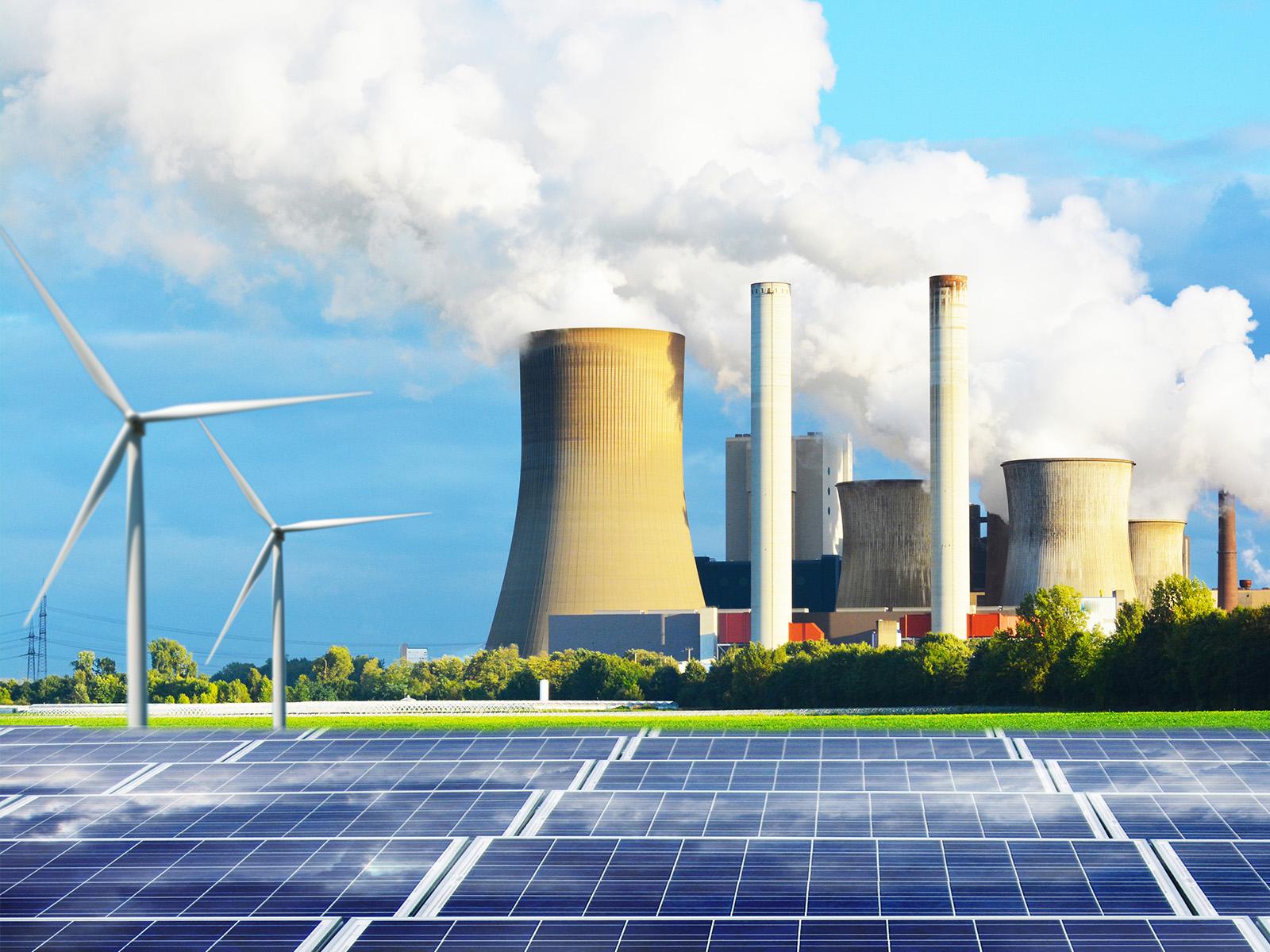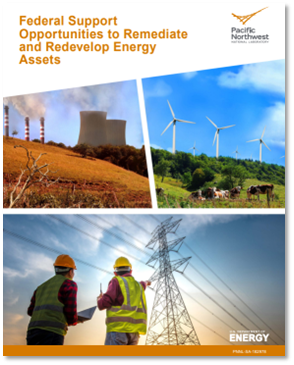Coal Reinvestment
Supporting “coal-to-X” reinvestments with expertise in efficient, advanced technology to reduce energy costs for households

Coal power plants across the country are retiring, with impacts on local jobs, tax bases, and identity.
(Illustration by: Shutterstock)
Pacific Northwest National Laboratory (PNNL) is helping communities with significant historical ties to aging coal energy infrastructure understand opportunities and pursue numerous federal resources available to support reinvestment in advanced energy production technology and other economic options.
Coal-to-X Reinvestments
Coal power plants across the country are retiring, resulting in impacts on local jobs, tax bases, and identities. Coal power plant reinvestment is the process of converting these facilities to new uses. Retiring power plants often leave behind valuable infrastructure that can be repurposed and local communities are often well positioned to shape and support these reinvestments.
Approaching coal retirement as an economic reinvestments opportunity is a paradigm shift in the energy transition and one that is currently supported by a range of federal incentives and funding opportunities. PNNL is supporting these “coal-to-X” reinvestments through applying expertise in energy technology, energy regulation, and geospatial sciences.
This work builds on our previous specific experience with community-based coal transitions and business models for coal power plant decommissioning. Coal-to-X takes these further to envision specific new reinvestments opportunities.
Data for Identifying Opportunities
PNNL has been working with the National Energy Technology Laboratory to develop a coal power plant redevelopment visualization tool. The tool combines data on coal power plants that have retired or have an announced retirement date with data that can inform redevelopment opportunities. These data layers include:
- Electricity transmission infrastructure, which can be a valuable asset for redevelopment
- Transportation infrastructure, like ports and rail
- Registered brownfield sites
- Other existing energy generation assets, which can help inform synergies with coal power plant redevelopments in a region.
The beta tool is publicly available, and the PNNL team is working to enhance the tool to include new layers and functions, like distance to planned renewable energy developments and energy-related apprentice training programs.
Reinvestments Fact Sheets
Coal power plant retirements are expected to continue, and many energy communities are currently navigating redevelopment options. PNNL is developing fact sheets on specific reinvestments pathways, including:
- Coal to solar energy (plus storage)
- Coal to wind energy (plus storage)
- Coal to nuclear energy
- Coal to energy-related manufacturing or industrial uses
- Coal to clean energy and data centers.
Resources for Reinvestments

There are numerous federal resources to support coal power plant redevelopment, particularly for communities that meet the specific definitions of energy communities defined by the Inflation Reduction Act (IRA) of 2022 described in the “Energy Communities” section below.
The Department of Energy (DOE) hosts a mapping tool to identify these qualifying areas. Our analysis indicates that about half of the country’s land area currently counts as an IRA energy community.
In 2023, PNNL developed a resource guide to help communities pursue several key opportunities:
- Energy Infrastructure Reinvestment (EIR): The IRA created this new project category under the DOE Loan Programs Office with up to $250 billion in lending authority to “retool, repower, repurpose, or replace energy infrastructure” for cleaner uses. EIR can support site remediation and redevelopment in a single transaction.
- Clean energy tax credits: The IRA extended and expanded clean energy tax credits for solar, wind, storage, hydrogen, and other clean energy activities. These tax credits help support new uses in coal-to-X redevelopments.
- Brownfields Grants: Offered through the Environmental Protection Agency, these grants can help support brownfield site assessment, remediation, and job training. Many retired or retiring coal power plants are expected to be brownfields under the general definition where actual or potential contamination can pose challenges for redevelopment. Despite these challenges, brownfields often have significant potential because they are commonly located next to existing infrastructure and workforce.
PNNL scientists worked with DOE and the Environmental Protection Agency to identify how these opportunities can be stacked, staged, or used independently to support transitioning projects from retirement through remediation to redevelopment. Some opportunities, like the EIR loan guarantees, have an approaching 2026 commitment deadline that underscores the need to identify projects in the near term, while others like the IRA clean energy tax credits are expected to create at least a decade-long window of opportunity.
Energy Communities
Energy communities are those with significant historic ties to aging energy infrastructure. These communities face potential economic challenges as the energy system transitions to more technologically advanced sources. In 2021, a federal interagency working group was formed to shape economic revitalization in energy communities. The IRA created specific definitions of energy communities for accessing bonuses on clean energy-related tax credits.
The IRA generally defines energy communities as:
- Census tracts where a coal power plant has retired since 2010 or a coal mine has closed since 2000, and adjoining census tracts
- Areas with coal- to oil-related employment and tax revenues above a certain threshold, and with unemployment above the national average
- Brownfields, which are sites where contamination may pose challenges to reinvestment.
Certain clean energy projects sited in these areas are eligible for tax credit bonuses, which are expected to attract significant investment to energy communities.
DOE hosts a mapping tool to identify these qualifying areas.